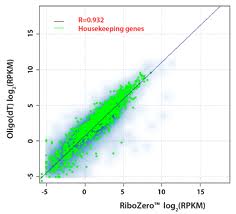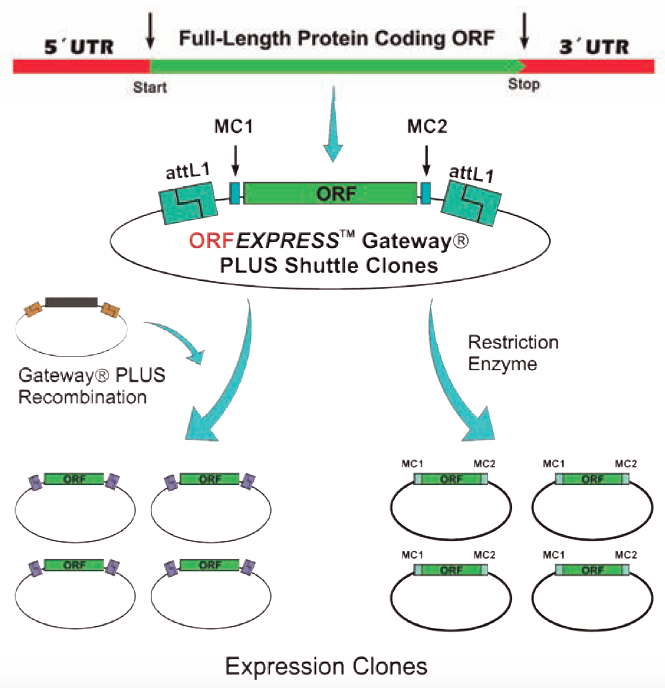Many labs have adopted the CRISPR genome editing technology to make knock-out and knock-in cell lines.
This technology produces first a targeted break in genomic DNA, which can then be exploited to produce cell lines with genes knocked out or where a donor vector has been used to introduce new genetic elements (point mutants, fluorescent tags, antibiotic resistance cassettes, etc.). Essentially any desired modification to the cells genome can be made. In setting up these genome editing projects there are many choices to be made including vector for the Cas9 protein and for the sgRNAs. Perhaps the most difficult choice, however, can be which cell line to use. Even the most affordable stable genome editing cell line development services can come with a significant cost, so choosing the right cell line at the beginning is crucial. Here we explain some of the choices researchers have in setting up their CRISPR genome editing projects and give our advice for cell line selection.

Because of the great demand for this ability to create cellular models with complete gene knockout, reporters under the control of an endogenous promoter, etc., there has been an explosion in the commercial offerings of products and services around this technology. For example, to make the targeted break in the genome, the Cas9 protein and sgRNAs must be introduced to the nuclei of cells.
Cas9 expression
The Cas9 protein alone can be introduced to cells either via a transfected plasmid, Lentivirus, Adenovirus, transfected mRNA, and even cell lines stably expressing Cas9 are commercially-available (ex. TriLink, tebu-bio, GeneCopoeia, SignaGen):
- Cas9 Mammalian expression construct – D10A nickase Cat. nr 217CP-C9NI-01
- Cas9 Mammalian expression construct – D10A nickase (mCherry, Neo) Cat. nr 217CP-C9NI-02
- Cas9 Mammalian expression construct – wild-type (mCherry, Neo) Cat. nr 217CP-C9NU-01
- Cas9 Lentiviral expression plasmid – wild-type (Neo) Cat. nr 217CP-C9NU-01
- Cas9 Lentiviral expression plasmid – wild-type (GFP, Neo) Cat. nr 217CP-LvC9NU-02
- Cas9 Lentiviral particles – wild-type (Neo) Cat. nr 217LPP-CP-LvC9NU-01-100
- Cas9 Lentiviral particles – wild-type (GFP, Neo) Cat. nr 217LPP-CP-LvC9NU-02-100
- Cas9 Adenovirus – wild-type Cat. nr 189SL101106
- Cas9 Adenovirus – wild-type (GFP) Cat. nr 189SL101107
- Cas9 H1299 cells expressing Cas9 – wild-type (GFP, puro) Cat. nr 217SCL-01-CA1
- Cas9 HEK293T cells expressing Cas9 – wild-type (GFP, puro) Cat. nr 217SCL-02-CA2
- Cas9 mRNA NLS – pseudo-U Cat. nr 040L-6129
- Cas9 mRNA NLS – 5-methyl-C, pseudo-U Cat. nr 040L-6125
- Cas9 mRNA – D10A nickase, NLS, 5-methyl-C, pseudo-U Cat. nr 040L-6116

The H1299 cells and HEK293T cells stably expressing Cas9 carry a copy of Cas9 in the AAVS1 safe-harbor site in their genome. Such a cell line would be useful for experiments using commercially available sgRNA libraries to screen for genes involved in a particular phenotype.
sgRNA choice
A similarly vast selection exists for producing sgRNAs.
GeneCopoeia, for example, has a vast catalog of sgRNA-encoding mammalian expression constructs for nearly any gene that one can find using their search engine. Other users may prefer to transfect cells directly with sgRNA/gRNA produced by high quality RNA suppliers. This latter option allows users to try innovative approaches such as using chemically-modified mRNAs, DNA-RNA hybrid molecules, and pre-assembled sgRNA complexes. The custom RNA inquiry form from tebu-bio will put users in contact with a specialist to help design custom sgRNAs.
Choosing the right cell line
The majority of researchers we have talked to have been moving away from classic laboratory cell lines (e.g. HeLa, 293HEK) over the past 10 years, so their initial thoughts are to generate CRISPR-modified cell lines using the more disease-relevant cells they are now using in their labs.
Many of these are primary cells that are better modified using lentivirus-based approaches, and the up-front cost required to modify the genome of a non-immortilized cell is prohibitive. Some of the more disease-relevant cell lines are difficult to transfect and/or have non-diploid chromosomal content. To make a simple knockout using CRISPR technology is fairly straightforward, but if the transfection efficiency is low and if there are more than two copies of the gene in the genome the chance of generating a complete knockout is reduced. After all of these concerns, some researchers reach the conclusion to just return to the most easy laboratory cell lines, such as HeLa and 293HEK that are easy to transfect, grow well and from which colonies can be selected.
HeLa cells, however, are estimated to have 76-80 chromosomes rather than the normal 46, which means they may have 4 copies of whatever gene you are trying to modify. 293HEK are thought to be hypotriploid with 60 chromosomes. Furthermore 293HEK cells have the notorious detachment problem that makes microscopy studies difficult. Some researchers we’ve talked to have eventually chosen RPE-1 cells as a diploid cell line for genome editing projects. These are retina epithelial cells immortilized with hTERT. The main problem with these cells is rather low transfection efficiency, so it would be advised to test various commercially-available transfection methods prior to beginning the genome editing project. Another diploid cell line that is popular is HT-1080, which is a fibrosarcoma cell line that is easy to transfect. We have talked to some of the experts at GeneCopoeia performing genome editing services and they indicate that HT-1080 cells are quite easy to work with.
Interested in setting up a genome editing project?
Talk to the experts at tebu-bio today! CRISPR Genome Editing Products & Services


